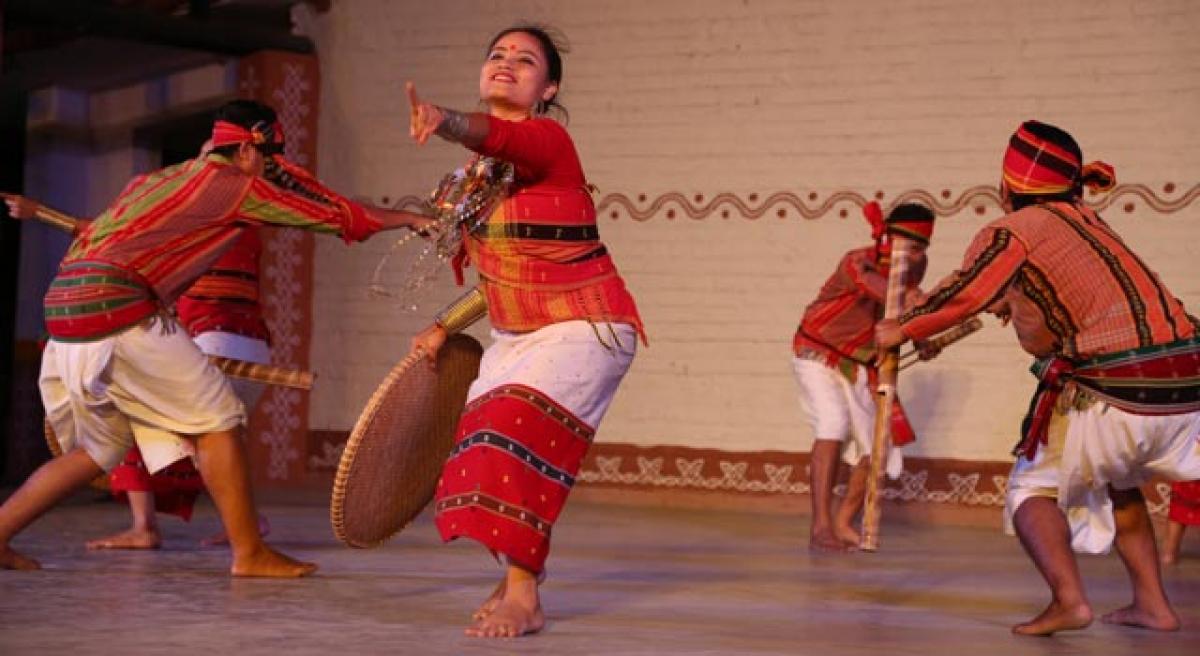
The early evidence of Kuchipudi’s existence is found in copper inscriptions of the 10th century. It is originated from the Natya Shastra, an ancient Hindu Sanskrit text. This type of dance starts with some initial steps and after that, every single step expresses various stories which is known as Dharavu. This is a unique form of dance where each step has its own meaning. Kuchipudi is originated from a village named Kuchipudi of Andhra Pradesh state and it is one of the famous Indian classical dances.

Generally, the originators of such folk dances are not known, but these folk dances have evolved and become folk dances over the years, bringing uniqueness and novelty to the Indian culture. Generally, the folk dances of India are performed to express joy during weddings, festivals, the birth of a child, etc. Folk Dance is a form of art that involves the movement of your body, rhythm, and music and it is also considered a way of social interaction, and emotional expressions like happiness, sorrow, exercise, and expression of ideas. Today we are going to focus on the folk dances of India. In India, there are various types of folk dances. India is a place of diverse cultures and traditions which make India a rich culture and heritage.

The central theme of the dance is Rasa Lila of Krishna and her abode Radha. Rural people represent the dance with great enthusiasm wearing traditional hats and costumes. It is an important folk dance performed in the Dhamtari district of the state. The Rahas dance is performed during festivals in Chhattisgarh. The dancers are mounted on two long bamboo poles or on any firm pole and also maneuver through the crowd of other Gendi (pole) mounted dancers.īanging on the ground, keeping an excellent balance while swaying with tribal acoustics and percussions.įurther, this is an amazing folk dance that has managed to keep its tradition alive. In all of the dance forms, Gendi is pure fun. Similarly, they dance in circles in front of all the houses in the town, after which they are given ration as a sign of gratitude for the dance and yes,īur Its genuine effect can as it was be seen to be experienced! So, Their faces become nothing less than a canvas with chalk, charcoal, and powdered rangoli spread on it. Halloween is a ritual, it is also played by children in the Bastar region.ĭuring the sun goes down, the children dress in rags and worn-out costumes. One of the famous Bastar dance is a Jhirliti.īut, A lesser-known dance form, is difficult to classify as an established dance form due to the lack of a fixed pattern. It is a strong belief that during the auspicious ‘tithi’ the god is awake. The dance is performed on ‘dev udhni Ekadashi’. It reinforces the ancient truth of the triumph of good over evil.Īs maintained by the Hindu calendar, it is celebrated on the 11th day after Deepawali.

But The cowboy Yadavs well represent Lord Krishna as their almighty. Therefore, the scenes show the fierce fight between King Khansa and the cowboys in that area. The Yadava / Yaduvanshis, a Chhattisgarh caste, are considered descendants of Krishna. However, Chhattisgarh’s cowboys are the main artists of it. Likewise, A group of men builds a pyramid formation as the group leader sings.Ī famous dancer of this dance was the late Devdas Banjare. Moreover, The dancers wear colorful dresses and sing praises to the “guru”. The dance also combines a variety of steps and patterns and generally denotes the teachings and sayings of its holy master. The rich cultural heritage and traditional legacies of the tribal groups. The community also celebrates the anniversary of the birth of Guru Ghasidas in Maghi Purnima. This Dance is one of the most vital forms of folk dance in this locale.Ī prominent custom of the Satnami community of Chhattisgarh. She has also received various awards like Padma Shri, Padma Bhushan, etc. Teejan Bai from Chhattisgarh is one of Pandvani’s most famous artists. It is the dark horse of the Chhattisgarh folk dance.īut, Portray the account of Pandavas, the main characters of an epic battle. Parrot represents Lord Shiva and Goddess Parvati.įamous poet Mukutdar Pandey gives the title of “Garba of Chattisgarh”. The women perform this dance and while doing so, keep a clay parrot in the center.

The artists also sing and move, accompanied by loud applause. Women of the devaar tribe perform this dance. So, During Goura’s wedding and Diwali, this dance is performed. The unexplored beauty of the region is complete without the camaraderie of tribal popular culture. This dance form marks the end of the rainy season and the advent of spring.īoth men and women participate in the dance following a lead singer. Generally performed by tribal groups like Gonds, Baigas, and Oraons in Chhattisgarh.


 0 kommentar(er)
0 kommentar(er)
